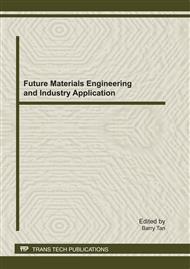p.160
p.169
p.180
p.187
p.194
p.199
p.205
p.209
p.216
Induction of Nitric Oxide Synthesis of a Lactobacillus acidophilus Strain in Human HepG2 Cells
Abstract:
Based on observations that lactic acid bacteria has proved to be beneficial in the treatment of viral-and antibiotic-associated diarrhea but the mechanisms of action remain unknown. Some reports indicated that nitric oxide (NO) might be involved in the protective mechanisms in the gastrointestinal tract and may contribute to some of the beneficial effects of probiotics. To confirm the effect of a probiotic Lactobacillus acidophilus (L. acidophilus) strain TCCC 11036 on the NO synthesis, in the present study, HepG2 human liver cells were cultured and treated with the supernatant or precipitate of L. acidophilus TCCC 11036 cell hydrolysates, then NO synthesis and its regulation were measured with the methods of NO assay, luciferase reporter assay and RT-PCR. The results showed that the production of nitric oxide was increased after treated with precipitates of the bacterium, and its transcription was enhanced as well. These works might provide a foundation for the following study of L. acidophilus and its probiotics functions, and contribute to the development of functional foods or drugs that provide health benefits to patients suffering from inflammation, cardiovascular disease, or some other diseases correlated with NO.
Info:
Periodical:
Pages:
194-198
Citation:
Online since:
October 2011
Authors:
Price:
Сopyright:
© 2012 Trans Tech Publications Ltd. All Rights Reserved
Share:
Citation:


